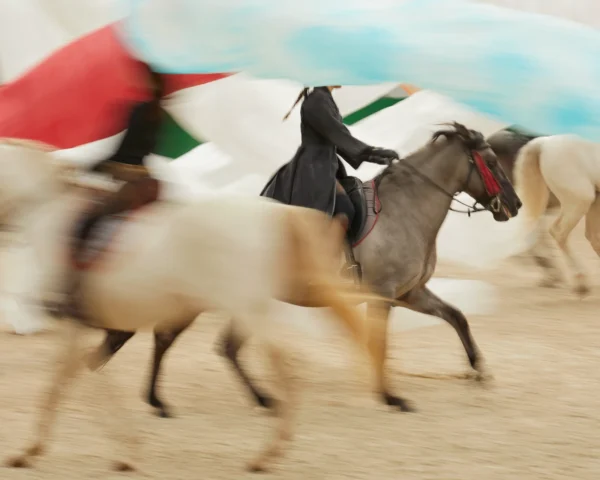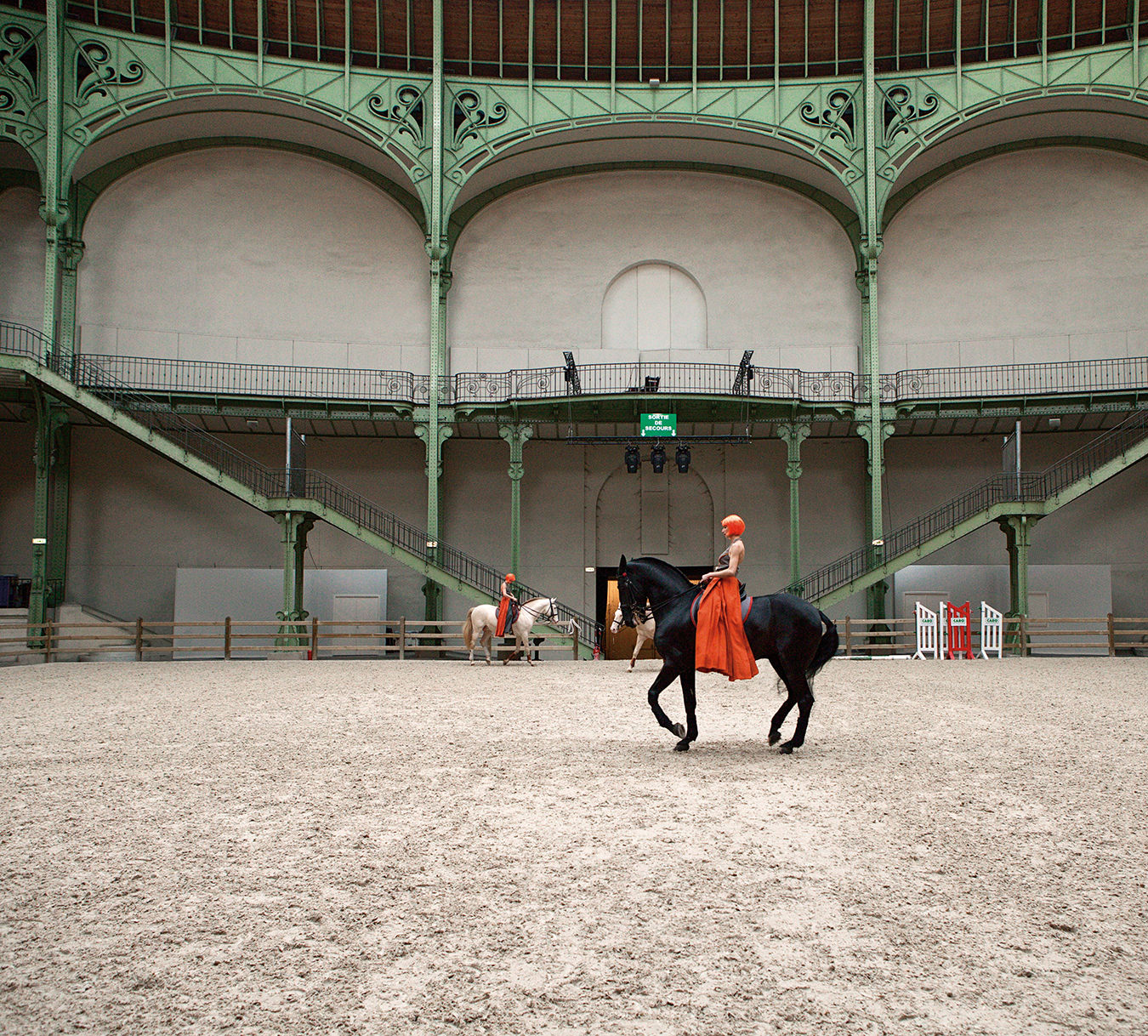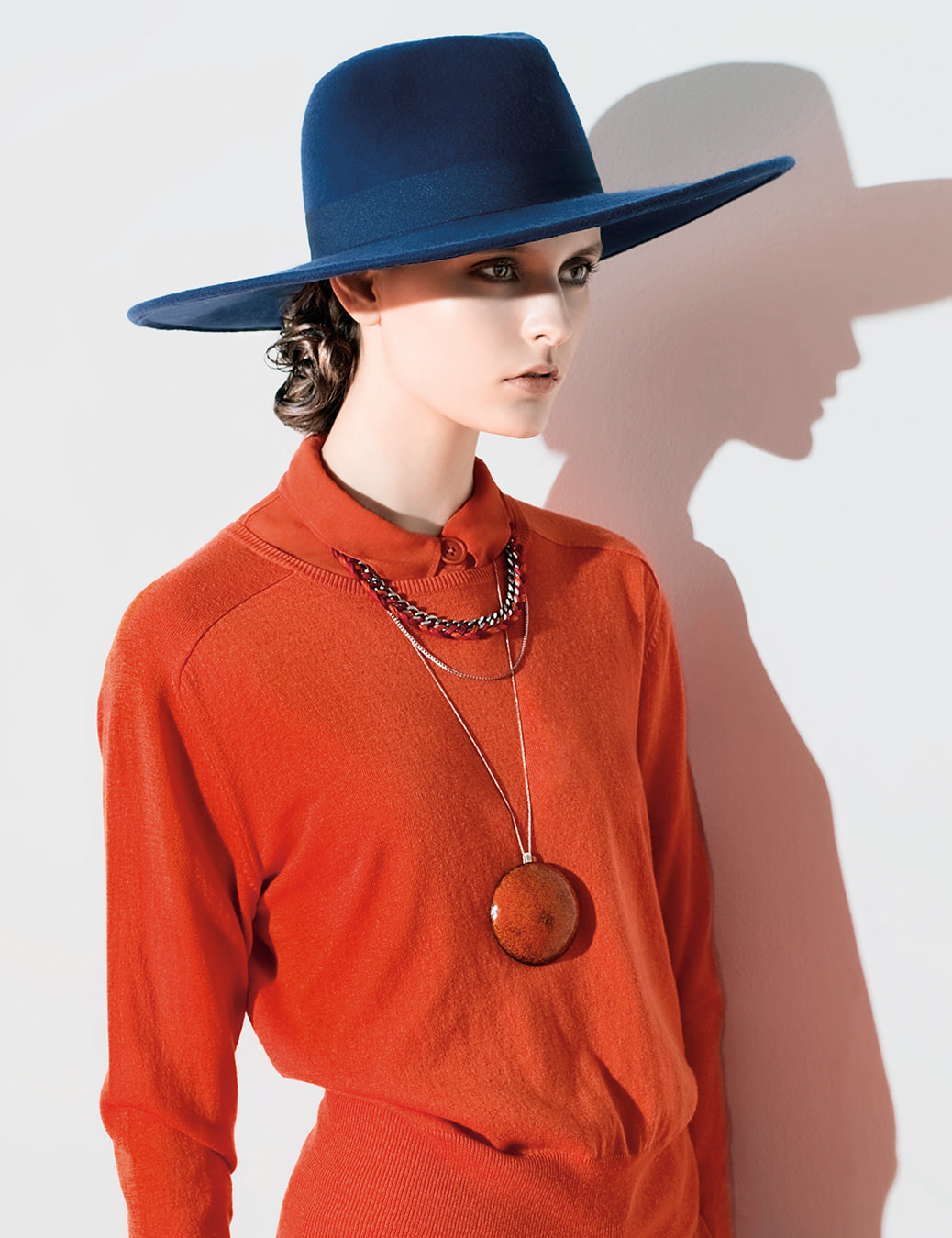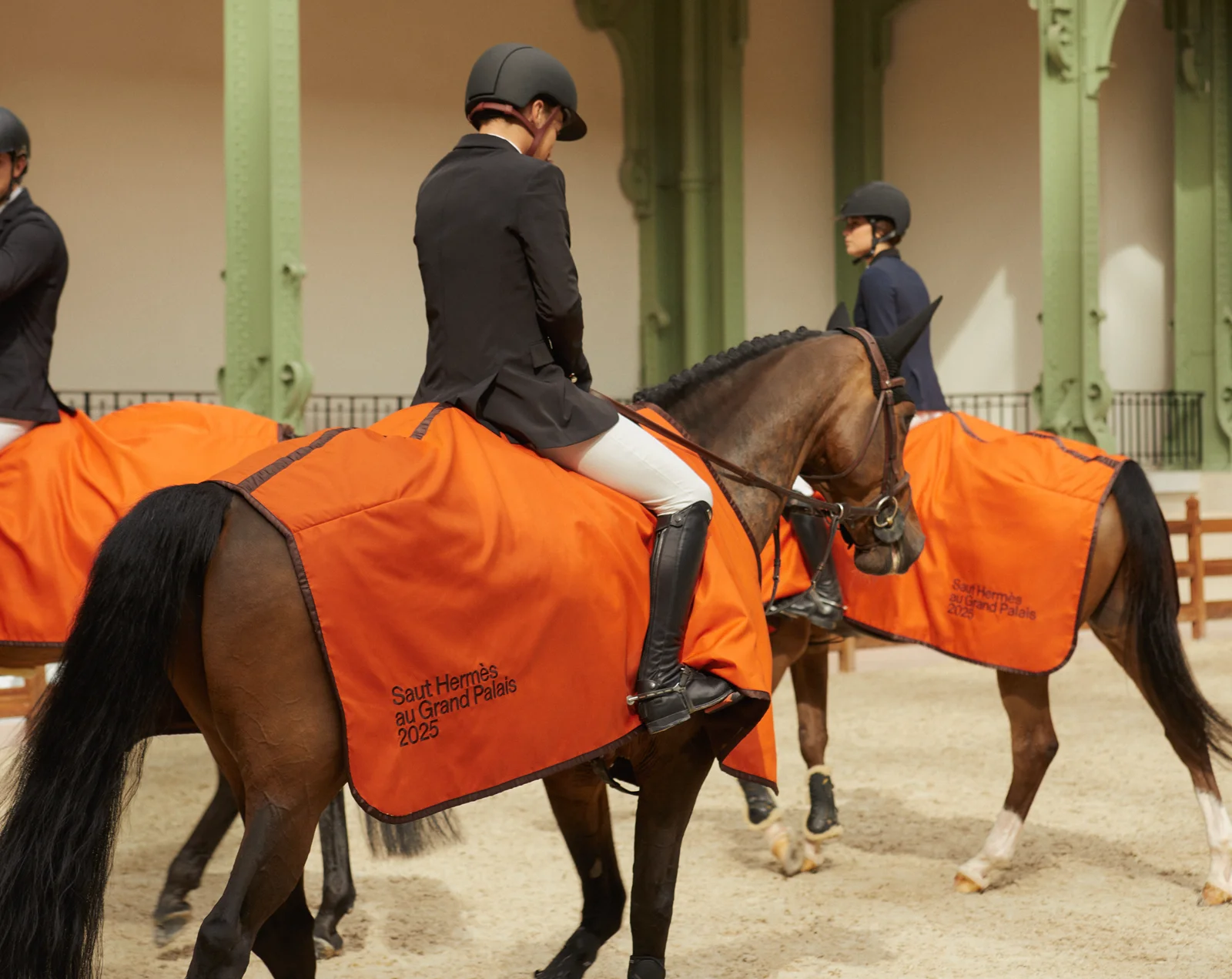
Saut Hermès: Equestrian Sport and Style
Sport and spectacle at the Grand Palais in Paris, where the annual show-jumping competition is held and Hermès showcases its saddle-making roots.
The Grand Palais is a site that’s hard to miss in Paris. The glass-domed complex in the 8th arrondissement (originally designed for the Universal Exposition in 1900) is an emblem of French grandeur and architectural prowess, and where la maison Hermès has restored a tradition last honoured in 1957 that made the Grand Palais the prime Parisian stage for equestrian events. With Saut Hermès, the annual show-jumping event, the brand puts the horse back in the centre of Paris, says Carolines Jacques, managing director of Hermès France.
And quite literally. White tents line the Champs-Élysées as the makeshift paddock where some 110 horses with names like Cayman Jolly Jumper, Untouched, EIC Julius Caesar, Vitalhorse Fleur d’Oz, and Brooklyn Heights are stabled, groomed, and prepared before entering the centre of the great atrium where the world’s show-jumping elite participate. Saut Hermès is an international competition given CSI 5* status (Concours de Saut International, a star rating to designate show-jumping competitions based on jump height and prize money, from the highest level, 5, to the lowest, 1) by the Fédération Équestre Internationale, and over a three-day period there are multiple contests, with hurdles reaching 1.6 metres, punctuated by theatrical set pieces with horses trained by the legendary Bartabas.
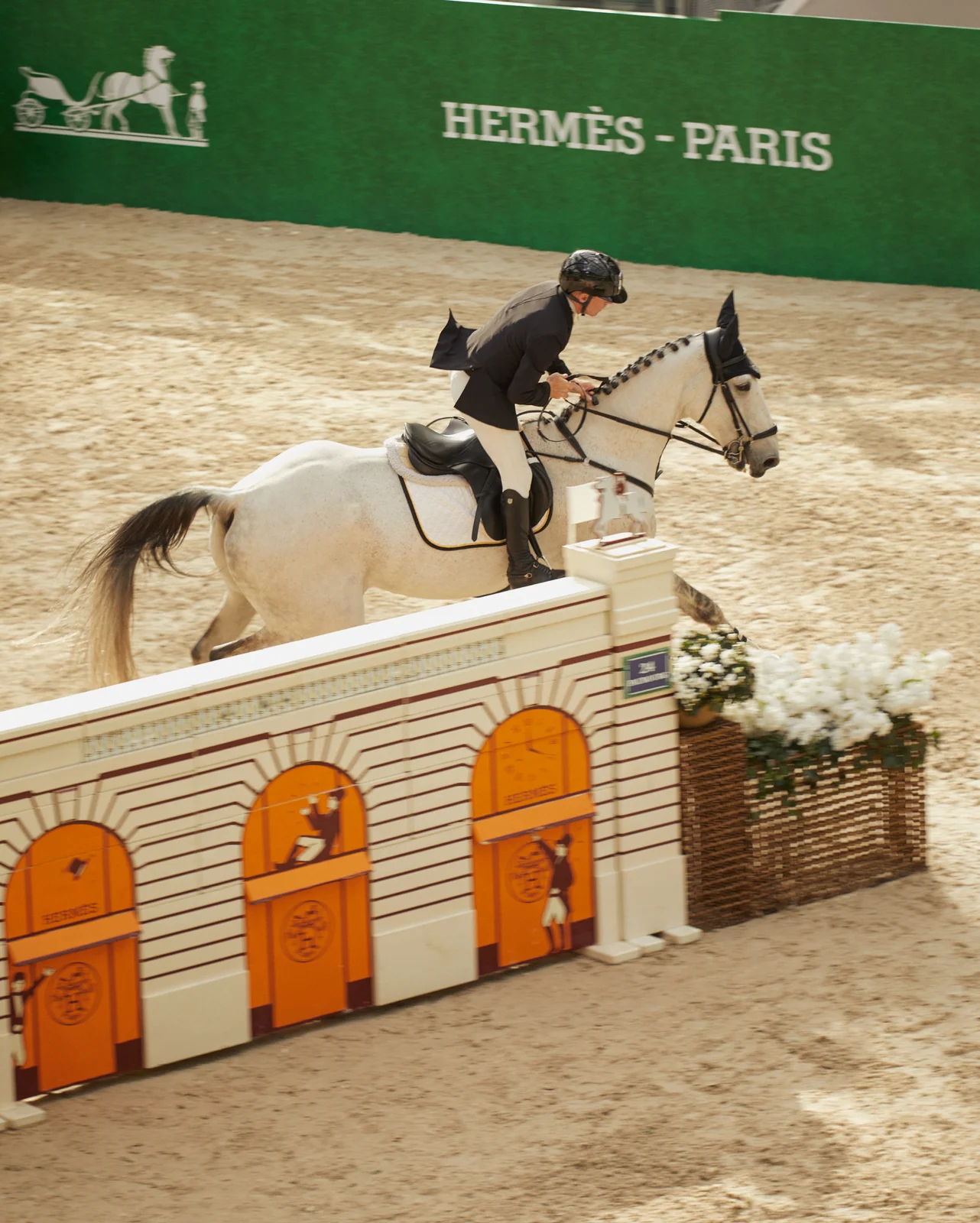

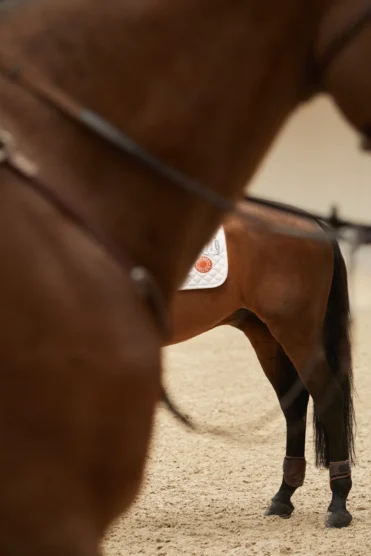
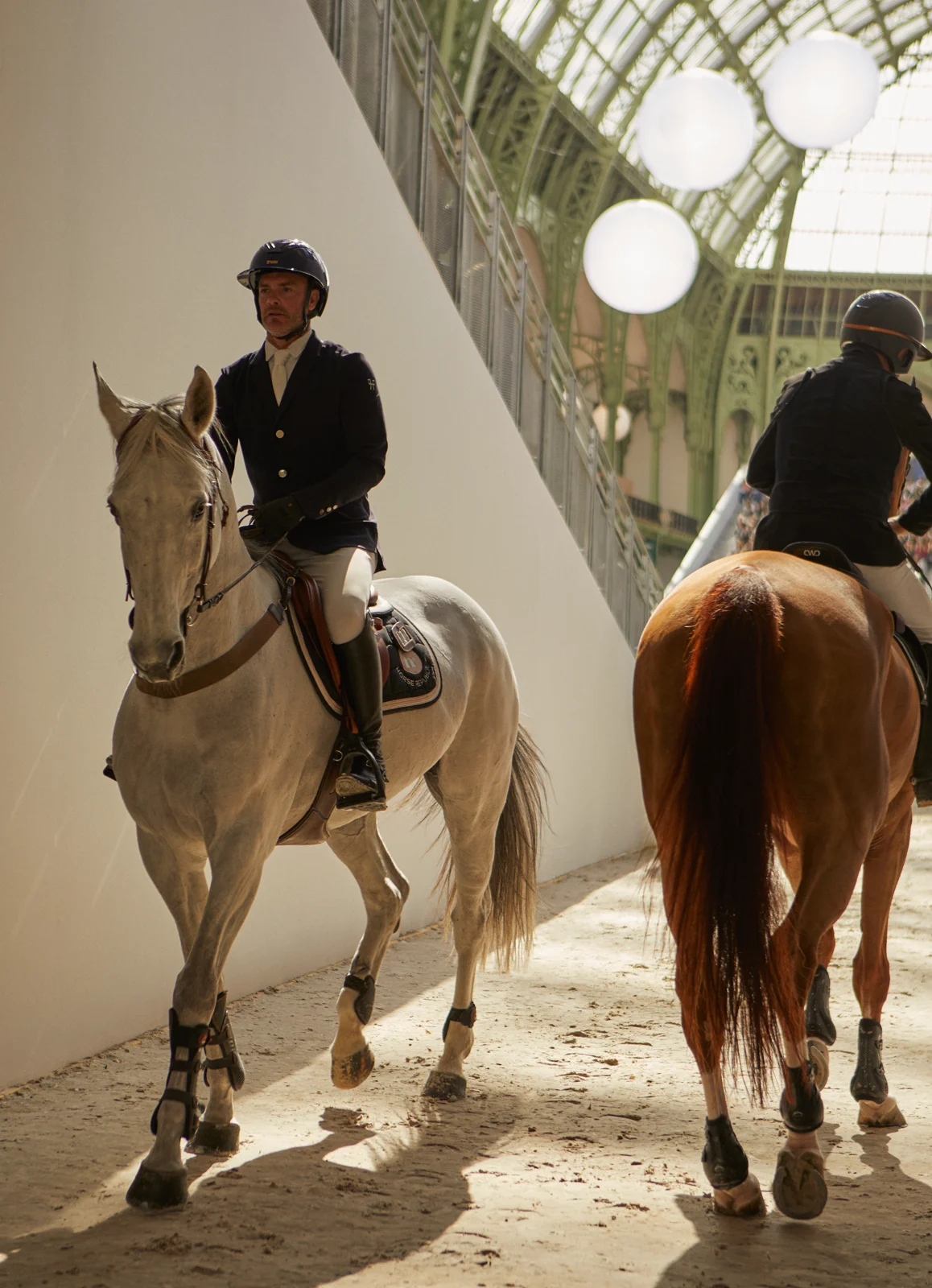
Saut Hermès is sport at the highest level with the kind of lineup seen at an Olympic Games: Austria’s Max Kühner, Germany’s Kendra Claricia Brinkop, Belgium’s Jérôme Guéry, and France’s own Simon Delestre competing for the Grand Prix Hermès prize of €400,000. The annual gathering is a display of horses and riders tracing arcs through the air beneath the vaulted glass dome of the Grand Palais, which has a particularity: “the fact Saut Hermès is an indoor competition but which benefits from the daylight from above,” Jacques notes, referring to the shifting light that penetrates the glass dome.
Whether an equine expert or novice, no matter. The moment the horse’s hooves thunder and the rider’s coattails flap is instantly captivating. Saut Hermès is a hot ticket and sells out each year. The narrow course creates room for the nearly 20,000 spectators each day but increases the technical difficulty for the horse and rider. The audience is close enough to feel the immense power of each horse even at a trot, but at a canter it becomes clear that it and the rider could take flight.
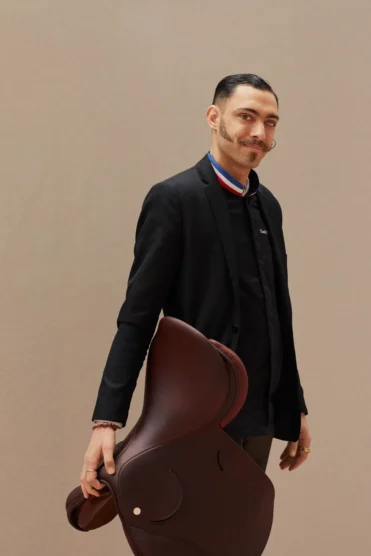

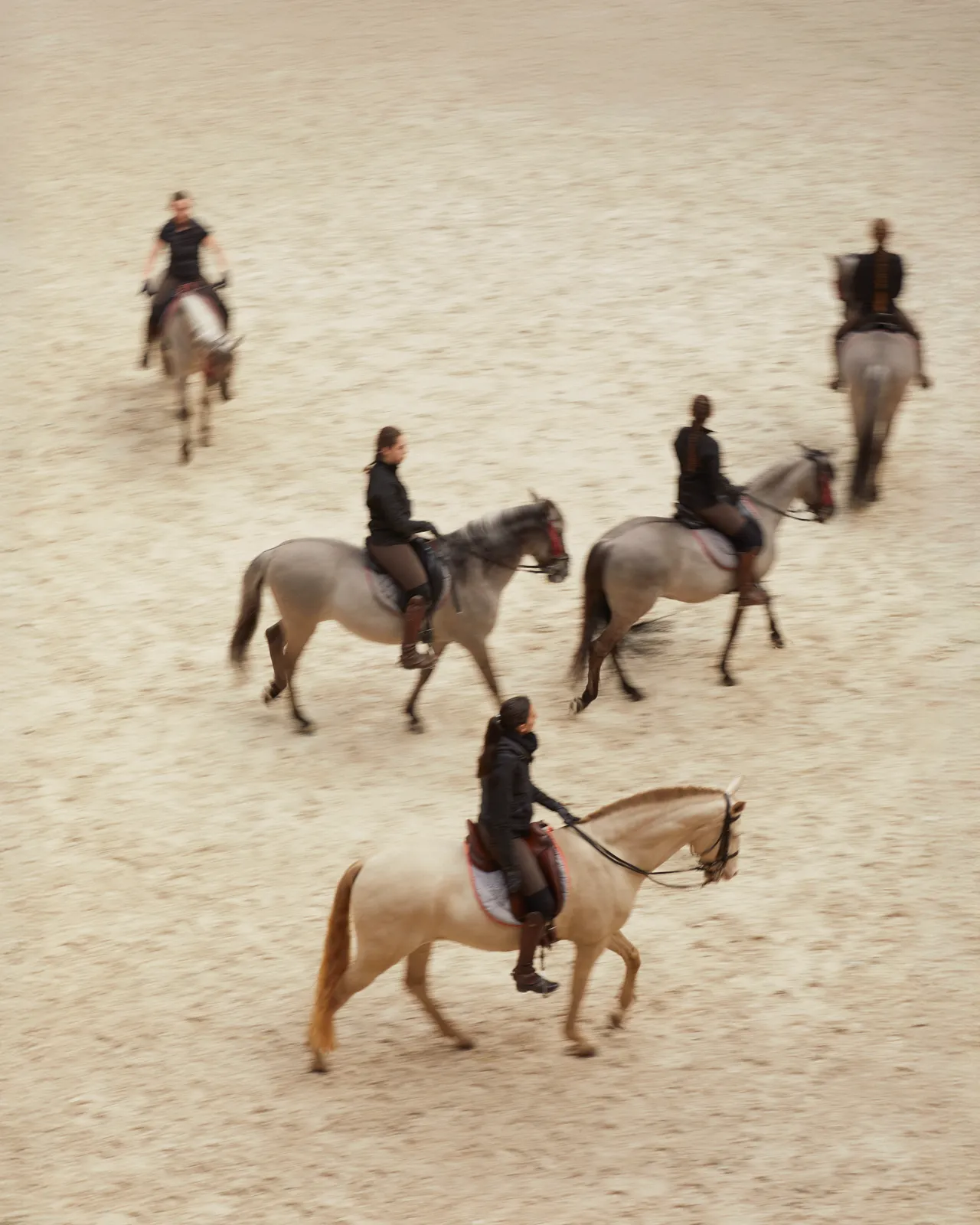
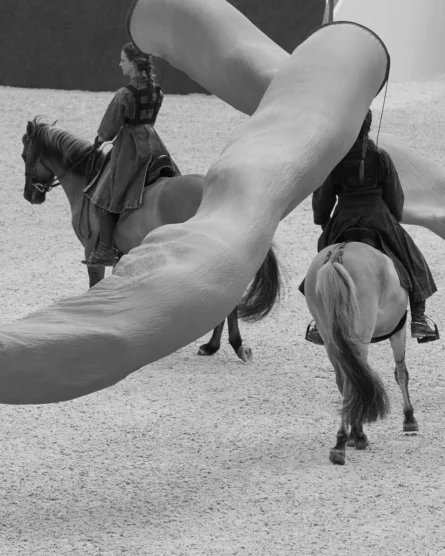
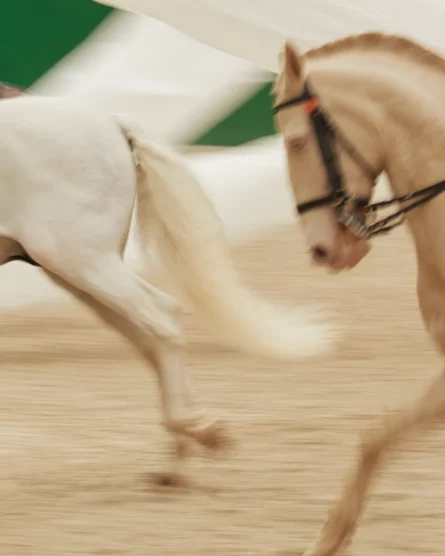
While the competition is the centrepiece, Saut Hermès is also a gathering of equestrian culture and a display of everything Hermès: bags, coats, scarves, and even the latest perfume, Paddock (think Saut Hermès bottled in a fragrance). When Thierry Hermès started Hermès in 1837, it was originally a saddle and harness workshop, and the saddle making continues, four floors above the flagship boutique at 24 Rue du Faubourg Saint-Honoré. Saut Hermès is “giving life to the equestrian roots of Hermès,” Jacques says—a conversation of orange and brown brand messaging that is sport, craft, and history. Paris, for these days, belongs to the horse once again.
